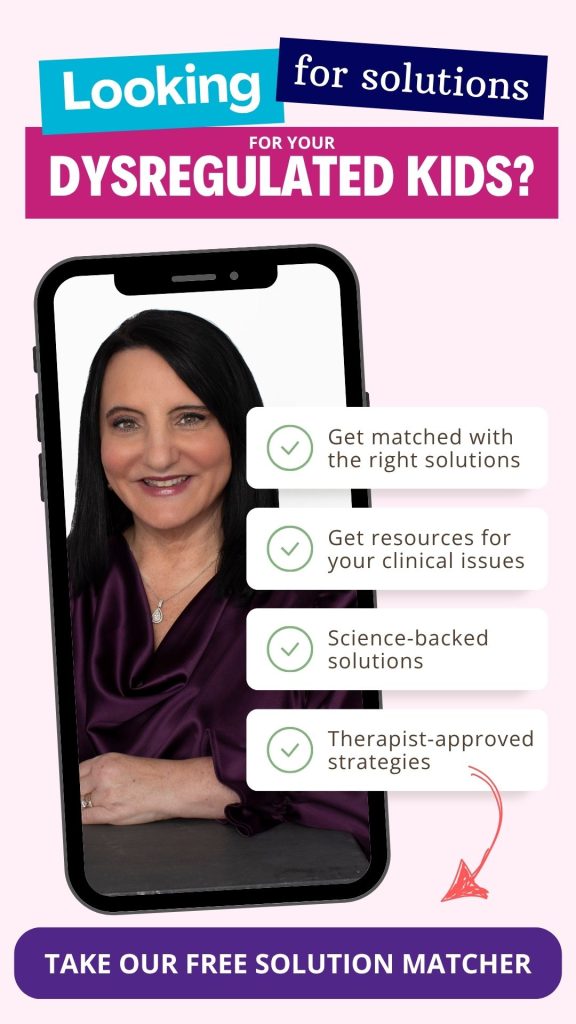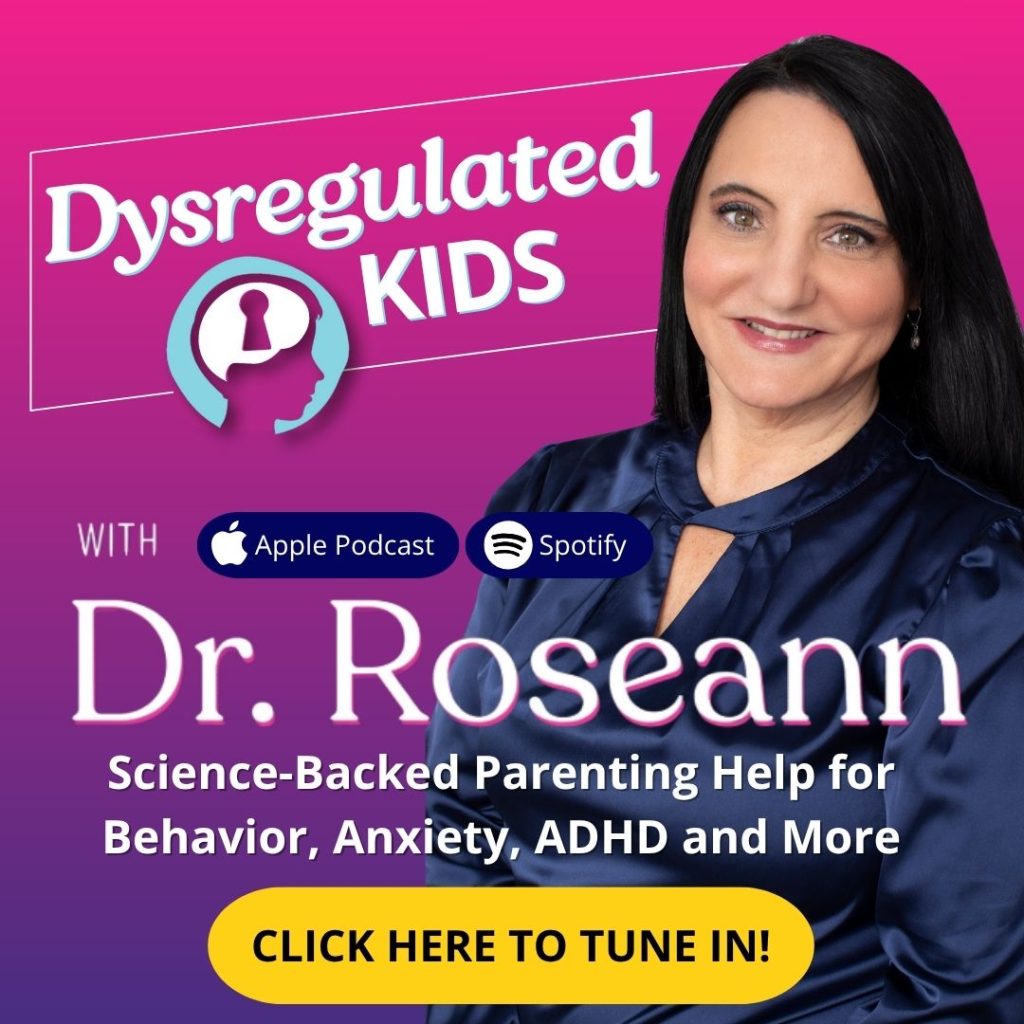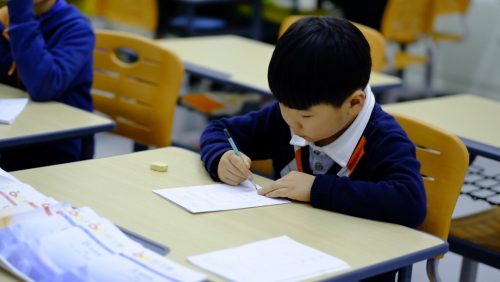Estimated reading time: 7 minutes
If you’re parenting a child with ADHD, you’ve probably heard that medication is the “go-to” solution. But what many families don’t realize is that there are evidence-based alternatives that can calm the brain and improve focus—without the side effects or long-term worries that often come with prescriptions.
ADHD isn’t just about behavior; it’s about regulation. And when we start by supporting the brain naturally, kids can thrive at school, at home, and in their relationships.
In this article, we’ll explore proven, science-backed ways to treat ADHD without medication—options that give you real tools and real hope.
Signs Your Child Needs Support for ADHD Without Medication
About 9.6% of US children ages 3–17 have ADHD, and it isn’t something most simply ‘grow out of’ (CDC, 2021). Untreated ADHD can affect daily life—and probably already does.
Parents often describe their child as scattered, emotional, or always on the move. These aren’t signs of laziness—they’re signs of a dysregulated brain asking for help.
Common clues of dysregulation:
- Frequent meltdowns or irritability
- Trouble sitting still or focusing
- Forgetfulness and unfinished tasks
- Emotional ups and downs
- Sleep or eating difficulties
Parent Story
Sarah, mom of a 9-year-old, shared: “Every day felt like walking on eggshells. I thought he was defiant, but once I learned it was dysregulation, I stopped blaming myself and started calming his brain.”
Takeaway:
Behavior is communication—look past the symptoms to find the root cause.
Why Should Parents Consider ADHD Alternatives to Medication?
Medication can sometimes provide short-term focus, but it doesn’t address the root cause—a dysregulated nervous system.
Concerns with relying only on medication:
- Side effects: appetite loss, sleep issues, irritability
- Doesn’t build long-term skills for regulation
- Stops working once the pill wears off
No wonder so many parents feel frustrated when the benefits fade or side effects pile up. When we calm the brain first, everything else follows—because while meds may ease symptoms, natural regulation tools create lifelong change.
How Lifestyle Changes Improve ADHD Without Medication
Daily habits shape how a child handles life’s ups and downs. Small, consistent steps can turn stormy seas into calmer waters, especially for kids with dysregulated brains.
Lifestyle supports:
| Nutrition | Protein-rich meals and leafy greens anchor mood, while sugary snacks send signals bouncing around. |
| Sleep | A steady bedtime with screens off an hour earlier helps the nervous system reset naturally. |
| Exercise | Running, jumping, or even a long walk drains tension and pumps focus back in. |
| Stress reduction | Predictable family routines create a soft landing for brains that spin out easily. |
When routines gently support the nervous system, everything else feels lighter. Calm the brain first, everything follows—and suddenly homework, meltdowns, and school chaos don’t feel like mountains anymore.
Can Neurofeedback Help My Child with ADHD Without Medication?
Neurofeedback, also called EEG biofeedback, gently teaches the brain how to focus and stay calm. Think of it as a workout for your child’s mind—one that strengthens attention, builds resilience, and helps them find their calm.
Benefits for ADHD:
- Boosts focus and motivation in ways medication can’t mimic
- Reduces distractibility and impulsive reactions that make daily life chaotic
- Encourages healthy brainwave patterns for steadier moods and clearer thinking
Side effects are mild—usually just a bit of mental fatigue while the brain adjusts. In one study, 91% of 60 children with ADHD (ages 6+) improved after 40 sessions (Xiong et al., 2005).
Neurofeedback doesn’t just mask behavior—it regulates the nervous system at its core. When we calm the brain first, everything else follows.
Can Pulsed Electromagnetic Field (PEMF) Therapy Help Calm My Child’s ADHD Brain?
PEMF therapy has been around since the 1950s and is FDA-approved for injuries, pain, and other physical challenges.
Many parents tell me their child’s brain feels like it’s always stuck in high gear. PEMF therapy offers a gentle nudge, helping the brain slip into calm—a state many ADHD brains rarely reach on their own.
How PEMF helps:
- Quiets racing thoughts and daily stress
- Eases irritability and body tension
- Boosts mental clarity for steadier thinking
Tiny electromagnetic pulses re-energize mitochondria, your cells’ power plants, helping focus, mood, and simple tasks feel easier. One study showed meaningful improvements in patients with depression, anxiety, and pain after 12 weeks (Hattapoglu et al., 2019).
With tools like Calm PEMF™, families can bring this therapy home. Your child can think clearly, stay grounded, and take action—because calm brains make everything easier. Calm the Brain First, Everything Follows.

Can EFT (Tapping Therapy) Help My Child with ADHD?
EFT, or Emotional Freedom Technique, works like a gentle reset for the mind. Imagine your child carrying invisible tension everywhere—they tap on the chest, head, or hands while focusing on a stressor, and slowly that stuck energy begins to loosen.
How it supports ADHD:
- Quiets racing thoughts and daily stress that drain attention
- Releases tension and hidden negative emotions lingering under the surface
- Encourages steadier thinking, calmer moods, and emotional balance
Research by Bach et al. (2019) shows EFT benefits depression, anxiety, phobias, and PTSD. For kids, it can be a quick self-help tool or used in sessions with a licensed professional.
EFT doesn’t just mask behavior—it helps regulate emotions at a nervous system level. And for overwhelmed parents, having a tool this simple can feel like a lifeline on hard days.
How Does Cognitive Behavioral Therapy (CBT) Help My Child With ADHD?
CBT, or talk therapy, shows kids how thoughts shape behavior. Dysregulated brains can get stuck in frustration loops, making focus nearly impossible. Noticing patterns and practicing new responses helps kids find calm and confidence.
How CBT supports ADHD:
- Builds coping skills for stress and overwhelm
- Uses role-playing for problem-solving and real-time feedback
- Strengthens confidence and practical life skills
Research shows adults with ADHD improve daily functioning and self-efficacy with CBT (Sprich et al., 2010). Teens gain most when sessions encourage sharing ideas and creative solutions (Sprich et al., 2015).
CBT doesn’t just address behavior—it rewires thinking so the nervous system can settle and regulation can take root. For parents who feel like nothing is working, CBT can be a bridge to help kids find calm.
How Can a Healthy Diet Support My Child with ADHD?
A study by Sathyanarayana Rao et al. (2008) found that kids with ADHD often run low on:
- magnesium
- zinc
- vitamin D
That shortage can make focus tricky, moods spike, and even everyday tasks feel heavy. The good news? Giving the brain the right fuel helps kids feel steadier, think clearer, and stay calmer.
Nutrition tips that really help:
- Boost Omega-3s – Calms racing thoughts and smooths thinking
- Prioritize protein – Steadies moods, balances blood sugar, and eases impulsivity
- Add fruits and veggies – Supplies vitamins, minerals, and slow-release energy
- Limit sugar and additives – Keeps focus steadier and behavior calmer
Even one small shift in meals can give the brain a calmer, sharper foundation—because when we calm the brain first, everything else follows.
How Do Magnesium and Other Supplements Help My Child With ADHD?

1. Magnesium
- Calms nerves and eases stress
- Kids with ADHD often feel every little spike of tension when magnesium runs low (Askari et al., 2020).
2. Vitamin D, Zinc, Ferritin
- Low levels can make moods wobble and energy drop.
- Adding these nutrients may reduce anxiety and improve behavior, according to Askari and colleagues (2020).
3. Vitamin C
- Supports brain signaling and dopamine function
- If your child takes medication, check with your doctor since timing and dosage really matter.
4. B Vitamins
- Help fight fatigue, keep brains alert, and calm anxious moments
- Since the body doesn’t store them well, consistent intake makes a noticeable difference (Askari et al., 2020).
Even tiny habits can calm the brain in ways that carry through the whole day. If you feel like nothing is working, please remember—it isn’t about doing everything at once.
Small, steady changes add up. Over time, your child may feel steadier, think more clearly, and handle challenges with less frustration.
Can Intermittent Fasting and Exercise Help ADHD?
Intermittent fasting isn’t safe for children under 18. While some adults with ADHD may benefit from planned food breaks (Gudden et al., 2021), kids need a gentler approach.
Why it helps:
- Gut-brain support
Balanced, well-timed meals can lift mood and ease anxiety
- Exercise
Simple activities like walking or playing outside can:
- boost focus
- calm stress
- lift energy
Remember: Consistency matters more than perfection.
Practical tips for kids:
- Walk 20–30 minutes around the neighborhood several times a week
- Offer meals with protein, fruits, and veggies at roughly the same times each day
How Does Mindfulness Meditation Help Treat ADHD?

Mindfulness won’t cure ADHD, but it can calm anxiety, reduce outbursts, and gently lengthen attention spans. For kids (and parents) who feel constantly on edge, even a few mindful minutes a day can shift the tone of the whole household.
Mindfulness-Based Interventions (MBIs) are emerging as powerful tools for improving self-control which influences:
- health
- learning
- long-term life outcomes (Siebelink et al., 2018)
How it helps:
- Teaches kids to pause before reacting
- Noticing feelings without getting swept away becomes easier
- Deep belly breaths calm the nervous system and relax the brain
Practical tips:
- Try short 3–5 minute mindfulness sessions daily.
- Pair mindfulness with belly-focused breathing exercises.
How Yoga or Pranayama Techniques Help:
- support calm
- improves focus
- enhance medication effects (Gunaseelan et al., 2021)
Medication-Free Strategies Parents Can Use At Home For ADHD
You don’t need hours of therapy—small, consistent tools make a real difference.
Try at home:
- Create a calm-down corner with sensory tools
- Use visual schedules for predictability
- Practice co-regulation: your calm helps your child’s brain calm too
- Offer micro-breaks: 5 minutes of movement or deep breathing
- End the day with a simple gratitude routine
If you’re looking for ADHD solutions without relying on medication, we can help. Our BrainBehaviorReset™ program blends natural, science-backed tools—like neurofeedback, CALM PEMF™, coaching, psychotherapy, and magnesium supplements—delivered in-center or at home.
We focus on helping your child’s brain work at its best, so behavior and emotional health can thrive. You’re not alone—there’s always a hopeful path forward.
Parent Action Steps
FAQs
What lifestyle changes help kids with ADHD?
Consistent meals, short exercise sessions, daily mindfulness, and visual schedules can improve attention, emotional regulation, and energy. Small, steady habits often make a noticeable difference in daily life.
How can parents support ADHD treatment at home?
Parents can create calm spaces, practice co-regulation, offer micro-breaks, and encourage gratitude routines. Combining these strategies with nutrient-rich meals and gentle brain exercises supports focus and behavior naturally.
Are supplements effective for ADHD without drugs?
Yes, nutrients like magnesium, Vitamin D, B Vitamins, and Vitamin C can support brain function, reduce anxiety, and improve focus. Always consult a healthcare provider for safe dosing and monitoring.
Citations
Askari, G., Hemamy, M., Heidari-Beni, M., Karahmadi, M., & Maracy, M. (2020). Effect of Vitamin D and magnesium supplementation on behavior problems in children with attention-deficit hyperactivity disorder. International Journal of Preventive Medicine, 11(1), 4. https://doi.org/10.4103/ijpvm.ijpvm_546_17
Bach, D., Groesbeck, G., Stapleton, P., Sims, R., Blickheuser, K., & Church, D. (2019). Clinical EFT (Emotional Freedom Techniques) Improves Multiple Physiological Markers of Health. Journal of Evidence-Based Integrative Medicine, 24, 2515690X18823691. https://doi.org/10.1177/2515690X18823691
Centers for Disease Control and Prevention. (2021, September 23). Data and statistics about ADHD. Centers for Disease Control and Prevention. https://www.cdc.gov/ncbddd/adhd/data.html
Gudden, J., Arias Vasquez, A., & Bloemendaal, M. (2021). The Effects of Intermittent Fasting on Brain and Cognitive Function. Nutrients, 13(9), 3166. https://doi.org/10.3390/nu13093166
Gunaseelan, L., Vanama, M. S., Abdi, F., Qureshi, A., Siddiqua, A., & Hamid, M. A. (2021). Yoga for the Management of Attention-Deficit/Hyperactivity Disorder. Cureus. https://doi.org/10.7759/cureus.20466
Hattapoglu, E., Batmaz, İ., Dilek, B., Karakoc, M., EM, S., & Çevik, R. (2019). The efficiency of pulsed electromagnetic fields on pain, disability, anxiety, depression, and quality of life in patients with cervical disc herniation: a randomized controlled study. Turkish Journal of Medical Sciences, 49(6), 1095–1101. https://doi.org/10.3906/sag-1901-65
Sathyanarayana Rao, T., Asha, M., Ramesh, B., & Jagannatha Rao, K. (2008). Understanding nutrition, depression, and mental illnesses. Indian Journal of Psychiatry, 50(2), 77. https://doi.org/10.4103/0019-5545.42391
Siebelink, N. M., Bögels, S. M., Boerboom, L. M., de Waal, N., Buitelaar, J. K., Speckens, A. E., & Greven, C. U. (2018). Mindfulness for children with ADHD and Mindful Parenting (MindChamp): Protocol of a randomized controlled trial comparing a family Mindfulness-Based Intervention as an add-on to care-as-usual with care-as-usual only. BMC Psychiatry, 18(1). https://doi.org/10.1186/s12888-018-1811-y
Sprich, S. E., Burbridge, J., Lerner, J. A., & Safren, S. A. (2015). Cognitive-Behavioral Therapy for ADHD in Adolescents: Clinical Considerations and a Case Series. Cognitive and Behavioral Practice, 22(2), 116–126. https://doi.org/10.1016/j.cbpra.2015.01.001
Sprich, S. E., Knouse, L. E., Cooper-Vince, C., Burbridge, J., & Safren, S. A. (2010). Description and Demonstration of CBT for ADHD in Adults. Cognitive and Behavioral Practice, 17(1), 9–15. https://doi.org/10.1016/j.cbpra.2009.09.002
Xiong, Z., Shi, S., & Xu, H. (2005). A controlled study of the effectiveness of EEG biofeedback training on children with attention deficit hyperactivity disorder. Journal of Huazhong University of Science and Technology. Medical Sciences = Hua Zhong Ke Ji Da Xue Xue Bao. Yi Xue Ying de Wen Ban = Huazhong Keji Daxue Xuebao. Yixue Yingdewen Ban, 25(3), 368–370. https://doi.org/10.1007/BF02828171
Always remember… “Calm Brain, Happy Family™”
Are you looking for SOLUTIONS for your struggling child or teen?
Dr. Roseann and her team are all about science-backed solutions, so you are in the right place!
Grab your complimentary copy of











